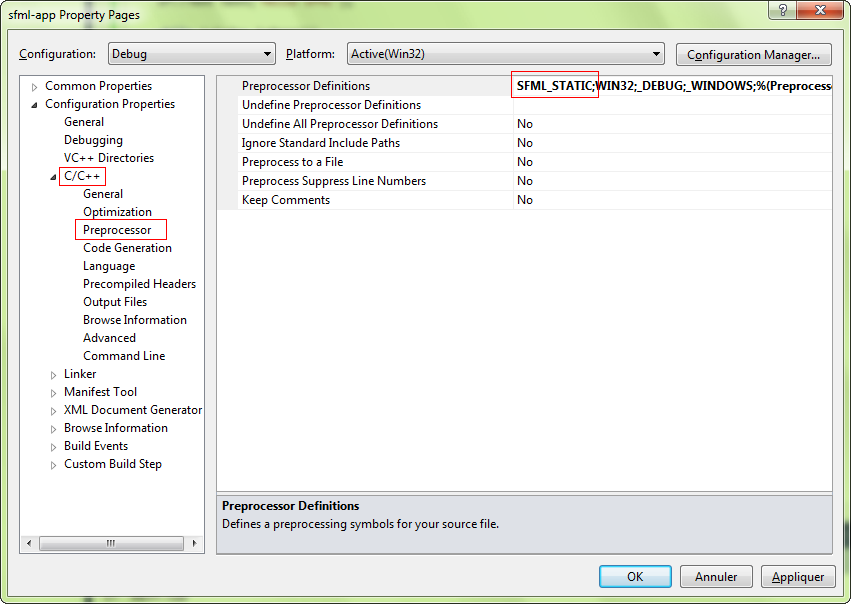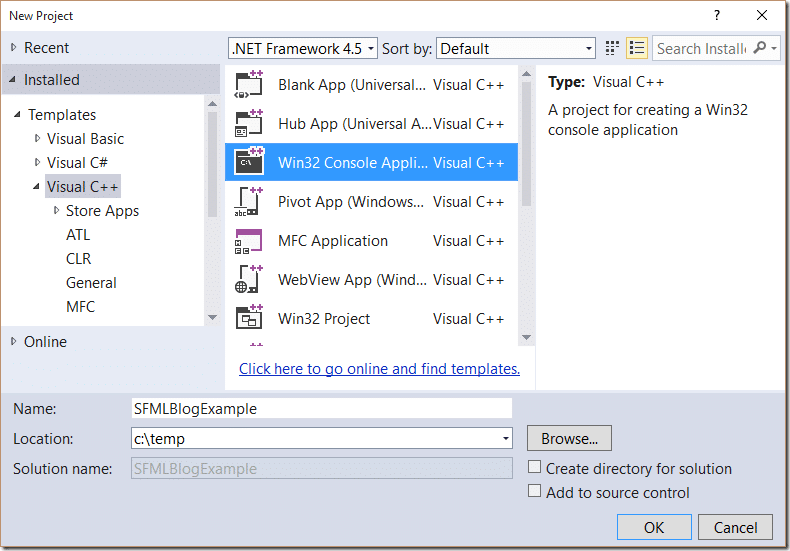

- Visual studio sfml errors but it works how to#
- Visual studio sfml errors but it works .exe#
- Visual studio sfml errors but it works code#
- Visual studio sfml errors but it works Pc#
Next, all the code is compiled into object files by the compiler program. First, the preprocessor looks to see if any other code needs to be included within our own code and adds it.

There are a few steps in the process of changing our code into an executable file.
Visual studio sfml errors but it works .exe#
exe file, which the player can simply double-click to run. The executable game is contained within a. These instructions are what make the game. What makes this true is the fact that the code that we write is directly translated into machine-executable instructions. One question you might have is, why use the C++ language at all? C++ is fast – very fast. Now that we know what games we will be building, let’s get started by introducing C++, Visual Studio, and SFML. Let’s get started by introducing C++, Visual Studio, and SFML! Meet C++
Visual studio sfml errors but it works how to#
It will also allow us to learn how to let the player use a gamepad instead of the keyboard and introduce the C++ concepts of smart pointers, casts, assertions, breakpoint debugging, and teach us the most important lesson from the whole book: how to build your own unique games: The game will also introduce concepts such as screens, input handlers, and entity-component systems. This will leave you with all the knowledge you need to plan and build deep, complex, and innovative games, without ending up in a tangle of code. The Space Invaders project (called Space Invaders ++) will show us ways in which we can radically reorganize our game code also that we can take control of and properly manage our code once and for all. Each project will introduce one or more techniques for coping with this, but the complexity and length of our code will keep coming back to challenge us, despite these techniques. As will become abundantly clear as this book progresses, our code keeps getting longer and more complicated. The project will be used to learn about game programming patterns. In some ways, the game itself is not what is important about this project. The final game will be a Space Invaders clone. Note that, in this folder, you can run either the completed games or any game in its partially completed state from any chapter.

If you want to play any of the games now, you can do so from the download bundle in the Runnable Games folder. Here is what our version of the game will look like when we are done and we have added a few last-minute enhancements: Our game, Timber!!!, will introduce us to all the basics of C++ while we build a genuinely playable game. The first game is an addictive, fast-paced clone of the hugely successful Timberman, which can be found at. The following are our five projects for this book. This journey will be smooth as we will learn about the fundamentals of the super-fast C++ language one step at a time, and then put this new knowledge to use by adding cool features to the five games we are going to build. Write the first C++ code of this book and make a runnable game that draws a background.Plan and prepare for the first game project, Timber!!!.Explore SFML and its relationship with C++.This is quite a hefty first chapter, but we will learn absolutely everything we need so that we have the first part of our first game up and running.
Visual studio sfml errors but it works Pc#
I will not waste any time in getting you started on your journey to writing great games for the PC using C++ and the OpenGL powered SFML. Welcome to Beginning C++ Game Programming.

Chapter 1: C++, SFML, Visual Studio, and Starting the First Game


 0 kommentar(er)
0 kommentar(er)
